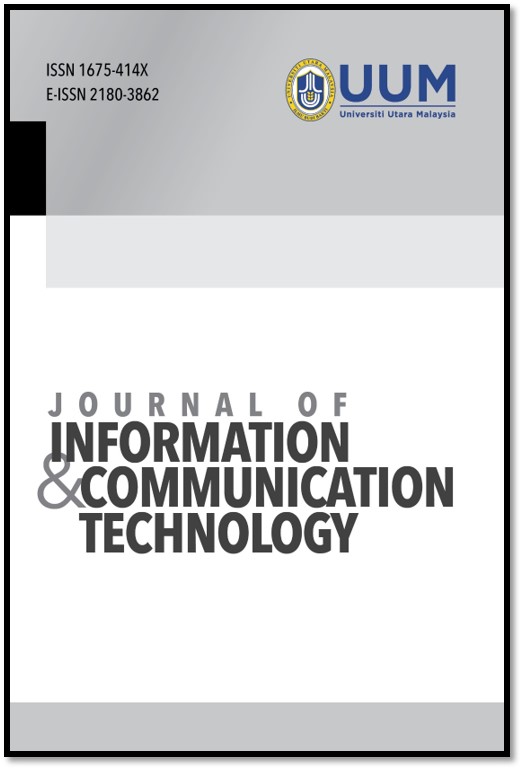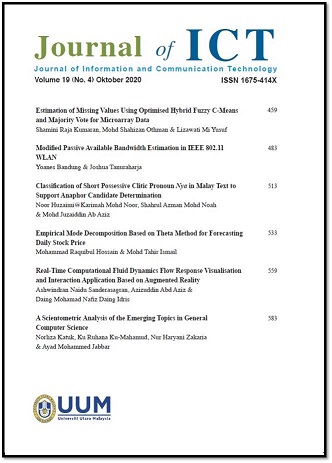MODIFIED PASSIVE AVAILABLE BANDWIDTH ESTIMATION IN IEEE 802.11 WLAN
DOI:
https://doi.org/10.32890/jict2020.19.4.2Keywords:
Available bandwidth estimation, distributed coordination function, IEEE 802.11, hidden nodesAbstract
Quality of Service provisioning for real-time multimedia applications is largely determined by a network’s available bandwidth. Until now, there is no standard method for estimating bandwidth on wireless networks. Therefore, in this study, a mathematical model called Modified Passive Available Bandwidth Estimation (MPABE) was developed to estimate the available bandwidth passively on a Distributed Coordination Function (DCF) wireless network on the IEEE 802.11 protocol. The mathematical model developed was a modification of three existing mathematical models, namely Available Bandwidth Estimation (ABE), Cognitive Passive Estimation of Available Bandwidth V2 (cPEAB-V2), and Passive Available Bandwidth Estimation (PABE). The proposed mathematical model gave emphasis on what will be faced to estimate available bandwidth and will help in building strategies to estimate available bandwidth on IEEE 802.11. The developed mathematical model consisted of idle period synchronisation between sender and receiver, the overhead probability occurring in the Medium Access Control (MAC) layer, as well as the successful packet transmission probability. Successful packet transmission was influenced by three variables, namely the packet collision probability caused by a number of neighbouring nodes, the packet collision probability caused by traffic from hidden nodes, and the packet error probability. The proposed mathematical model was tested by comparing it with other relevant mathematical models. The performance of the four mathematical models was compared with the actual bandwidth. Using a series of experiments that have been performed, it was found that the proposed mathematical model is approximately 26% more accurate than ABE, 36% more accurate than cPEABV2, and 32% more accurate than PABE.
Metrics
Metrics Loading ...
Additional Files
Published
20-08-2020
How to Cite
Bandung, Y. B., & Tanuraharja, J. (2020). MODIFIED PASSIVE AVAILABLE BANDWIDTH ESTIMATION IN IEEE 802.11 WLAN. Journal of Information and Communication Technology, 19(4), 483–511. https://doi.org/10.32890/jict2020.19.4.2
Issue
Section
Articles





 2002 - 2020
2002 - 2020


























